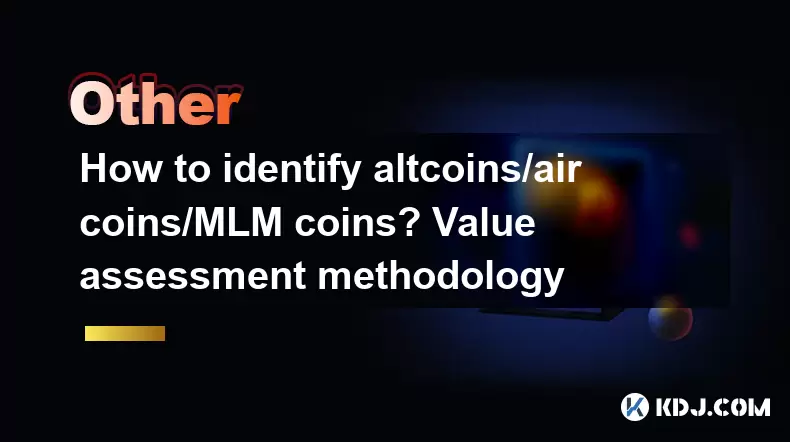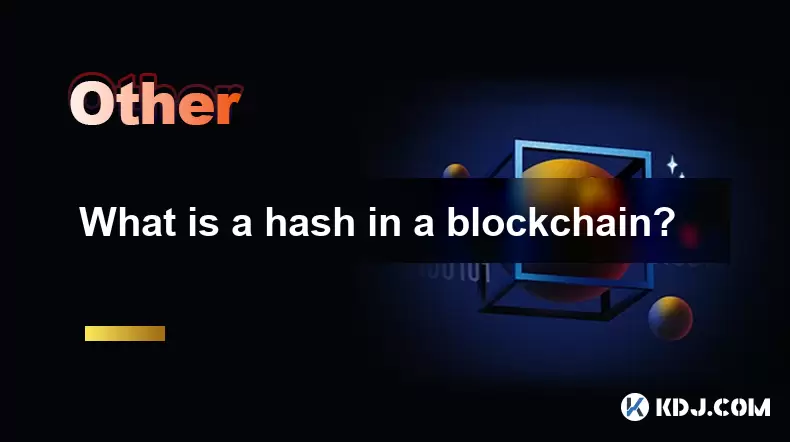-
 Bitcoin
Bitcoin $113900
-1.39% -
 Ethereum
Ethereum $3517
-4.15% -
 XRP
XRP $3.009
1.59% -
 Tether USDt
Tether USDt $0.9997
-0.04% -
 BNB
BNB $766.8
-1.41% -
 Solana
Solana $164.6
-2.38% -
 USDC
USDC $0.9998
-0.02% -
 TRON
TRON $0.3277
0.65% -
 Dogecoin
Dogecoin $0.2023
-1.67% -
 Cardano
Cardano $0.7246
0.05% -
 Hyperliquid
Hyperliquid $38.27
-4.77% -
 Sui
Sui $3.528
-0.52% -
 Stellar
Stellar $0.3890
-0.73% -
 Chainlink
Chainlink $16.16
-2.69% -
 Bitcoin Cash
Bitcoin Cash $539.9
-4.38% -
 Hedera
Hedera $0.2425
-2.00% -
 Avalanche
Avalanche $21.71
-0.97% -
 Toncoin
Toncoin $3.662
5.73% -
 Ethena USDe
Ethena USDe $1.000
-0.02% -
 UNUS SED LEO
UNUS SED LEO $8.964
0.35% -
 Litecoin
Litecoin $107.7
2.33% -
 Shiba Inu
Shiba Inu $0.00001223
-0.40% -
 Polkadot
Polkadot $3.617
-0.97% -
 Uniswap
Uniswap $9.052
-2.49% -
 Monero
Monero $295.1
-3.79% -
 Dai
Dai $0.9999
0.00% -
 Bitget Token
Bitget Token $4.315
-1.85% -
 Pepe
Pepe $0.00001060
0.11% -
 Cronos
Cronos $0.1342
-2.72% -
 Aave
Aave $256.0
-0.87%
How to identify altcoins/air coins/MLM coins? Value assessment methodology
Investors must assess altcoins, air coins, and MLM coins by examining team credibility, technology, market demand, community strength, and financial metrics to make informed decisions.
Jun 05, 2025 at 03:14 pm

Identifying altcoins, air coins, and MLM coins is crucial for investors looking to navigate the volatile cryptocurrency market effectively. This article will delve into the methodologies for assessing the value of these types of cryptocurrencies, providing detailed insights and actionable steps to help you make informed decisions.
Understanding Altcoins, Air Coins, and MLM Coins
Before diving into the value assessment methodology, it's essential to understand what these terms mean in the cryptocurrency context.
- Altcoins refer to all cryptocurrencies other than Bitcoin. They can range from established projects like Ethereum to newer, less-known tokens. While some altcoins have substantial value and utility, others may be speculative and risky.
- Air coins are cryptocurrencies that lack substantial backing, often promoted through aggressive marketing but with little to no real-world utility or technological innovation. They are typically characterized by a lack of transparency and poor fundamentals.
- MLM coins are cryptocurrencies associated with multi-level marketing schemes. These coins often promise high returns and rely on recruiting new members to sustain their value, rather than on genuine technological or economic value.
Key Factors in Value Assessment
To assess the value of altcoins, air coins, and MLM coins, several key factors need to be considered. These factors help in distinguishing between potentially valuable investments and risky, speculative ventures.
1. Team and Leadership
- Evaluate the team behind the cryptocurrency. A credible project typically has a transparent and experienced team. Check the team's background, their past projects, and their involvement in the cryptocurrency community.
- Look for red flags such as anonymity or a lack of verifiable credentials. Projects with anonymous founders or those who have a history of failed ventures should be approached with caution.
2. Technology and Innovation
- Assess the technology behind the cryptocurrency. Is it a novel solution to a real-world problem, or is it just a rehash of existing technologies? Projects with genuine technological innovation are more likely to have long-term value.
- Review the whitepaper and technical documentation. A well-written whitepaper with clear, detailed explanations of the technology and its applications is a positive sign. Be wary of projects with vague or overly complex whitepapers that fail to provide concrete information.
3. Market Demand and Utility
- Analyze the demand for the cryptocurrency. Is there a genuine need for the product or service it offers? Projects that solve real-world problems or provide unique services are more likely to have sustained demand.
- Consider the utility of the token. Does it have practical applications, or is it purely speculative? Tokens that are integral to a platform's operations and have clear use cases are generally more valuable.
4. Community and Ecosystem
- Evaluate the strength of the community and ecosystem surrounding the cryptocurrency. A strong, active community can be a good indicator of a project's health and potential for growth.
- Look for engagement on social media, forums, and other platforms. High levels of engagement and positive sentiment are positive signs. Conversely, projects with little to no community engagement may be struggling to gain traction.
5. Financial Metrics and Tokenomics
- Analyze the tokenomics and financial metrics of the cryptocurrency. This includes the total supply, circulating supply, distribution model, and any planned token burns or inflation mechanisms.
- Consider the project's funding and financial stability. Projects with strong backing and a clear path to profitability are more likely to succeed. Be cautious of projects that rely heavily on ICOs or other fundraising methods without a clear plan for sustainability.
Practical Steps for Value Assessment
To put the above factors into practice, follow these detailed steps when evaluating altcoins, air coins, and MLM coins:
- Research the project's website and official channels. Start by visiting the project's official website, social media accounts, and any community forums. Look for detailed information about the team, technology, and roadmap.
- Read the whitepaper thoroughly. Download and read the project's whitepaper. Pay attention to the problem statement, proposed solution, technology, and tokenomics. Take notes on any areas that seem unclear or overly complex.
- Investigate the team's background. Use LinkedIn, Google, and other resources to verify the credentials and past projects of the team members. Look for any red flags, such as a history of failed ventures or involvement in controversial projects.
- Analyze market demand and utility. Research the industry and market the project aims to serve. Look for evidence of demand and practical applications for the token. Consider speaking with industry experts or users to get a better understanding of the project's potential.
- Engage with the community. Join relevant social media groups, forums, and Telegram channels. Participate in discussions and ask questions about the project. Pay attention to the level of engagement and the sentiment of the community.
- Review financial metrics and tokenomics. Use cryptocurrency analytics platforms to access detailed information about the token's supply, distribution, and financial performance. Compare these metrics to similar projects to gauge the project's health and potential.
- Conduct a risk assessment. Based on your research, assess the risks associated with the project. Consider factors such as regulatory risk, technological risk, and market risk. Determine whether the potential rewards outweigh the risks.
Identifying Red Flags
When assessing altcoins, air coins, and MLM coins, it's crucial to be aware of common red flags that may indicate a risky or fraudulent project. These include:
- Lack of transparency. Projects that fail to provide clear information about their team, technology, and financials should be approached with caution.
- Overly aggressive marketing. Be wary of projects that rely heavily on hype and aggressive marketing tactics. Genuine projects typically focus on building a solid product rather than creating buzz.
- Promises of high returns with little risk. If a project promises high returns with minimal risk, it's likely too good to be true. All investments carry some level of risk, and projects that downplay this risk are often trying to deceive investors.
- Multi-level marketing schemes. Projects that rely on recruiting new members to sustain their value are often MLM schemes. These projects may offer referral bonuses or other incentives for recruiting new investors, which is a red flag.
Case Studies: Applying the Methodology
To illustrate how to apply the value assessment methodology, let's look at a few case studies of altcoins, air coins, and MLM coins.
Case Study 1: Ethereum (Altcoin)
- Team and Leadership: Ethereum has a well-known and respected team, led by Vitalik Buterin. The team's credentials and past projects are transparent and verifiable.
- Technology and Innovation: Ethereum introduced the concept of smart contracts, a groundbreaking innovation that has led to the development of numerous decentralized applications (dApps). The technology is well-documented and has been widely adopted.
- Market Demand and Utility: There is significant demand for Ethereum's platform, with thousands of dApps built on the network. The token, Ether, is integral to the platform's operations and has clear use cases.
- Community and Ecosystem: Ethereum has a strong and active community, with numerous forums, social media groups, and developer communities. The project's ecosystem is robust and continues to grow.
- Financial Metrics and Tokenomics: Ethereum has a well-structured tokenomics model, with a clear supply schedule and plans for future upgrades. The project is financially stable and has a clear path to profitability.
Case Study 2: Bitconnect (MLM Coin)
- Team and Leadership: Bitconnect's team was largely anonymous, with little verifiable information about their credentials or past projects. This lack of transparency was a significant red flag.
- Technology and Innovation: Bitconnect claimed to use a proprietary lending and trading platform, but the technology was never fully disclosed. The project lacked genuine technological innovation.
- Market Demand and Utility: There was no real demand for Bitconnect's product, as it offered no unique or valuable service. The token's utility was purely speculative, relying on the promise of high returns.
- Community and Ecosystem: Bitconnect had an active community, but it was primarily driven by the promise of high returns and referral bonuses. The community was more focused on recruiting new members than on the project's fundamentals.
- Financial Metrics and Tokenomics: Bitconnect's tokenomics were unsustainable, relying on a Ponzi-like structure to generate returns. The project's financials were opaque, and there was no clear path to profitability.
Case Study 3: Dogecoin (Air Coin)
- Team and Leadership: Dogecoin was created as a joke by two developers, Billy Markus and Jackson Palmer. While the team was transparent, the project lacked a serious, long-term vision.
- Technology and Innovation: Dogecoin is based on the Litecoin blockchain, with minimal technological innovation. The project's technology is not unique or groundbreaking.
- Market Demand and Utility: While Dogecoin has gained popularity as a meme coin, it lacks significant real-world utility. The token's value is largely driven by speculation and social media hype.
- Community and Ecosystem: Dogecoin has a large and active community, driven by its meme status and social media presence. However, the community's focus is more on the coin's entertainment value than on its fundamentals.
- Financial Metrics and Tokenomics: Dogecoin has a high total supply and a lack of clear tokenomics. The project's financials are not structured for long-term sustainability, and its value is highly volatile.
Frequently Asked Questions
Q: Can altcoins ever be as valuable as Bitcoin?
A: While altcoins can have significant value and utility, they typically do not reach the same level of market dominance as Bitcoin. However, some altcoins, like Ethereum, have established themselves as valuable assets in their own right, offering unique features and use cases that complement Bitcoin.
Q: How can I protect myself from falling for MLM coin schemes?
A: To protect yourself from MLM coin schemes, always conduct thorough research and be wary of projects that promise high returns with minimal risk. Look for red flags such as aggressive marketing, referral bonuses, and a lack of transparency. Engage with the community and seek advice from experienced investors before making any decisions.
Q: Are all air coins inherently risky investments?
A: Not all air coins are inherently risky, but many of them are. Air coins often lack substantial backing and rely heavily on marketing hype rather than genuine technological or economic value. It's crucial to assess each project on its own merits, considering factors such as the team, technology, and market demand.
Q: How important is the community in determining the value of a cryptocurrency?
A: The community is a critical factor in determining the value of a cryptocurrency. A strong, active community can drive demand, provide valuable feedback, and help the project grow. Conversely, a lack of community engagement may indicate underlying issues with the project's fundamentals or market fit.
Disclaimer:info@kdj.com
The information provided is not trading advice. kdj.com does not assume any responsibility for any investments made based on the information provided in this article. Cryptocurrencies are highly volatile and it is highly recommended that you invest with caution after thorough research!
If you believe that the content used on this website infringes your copyright, please contact us immediately (info@kdj.com) and we will delete it promptly.
- CoinDCX, Coinbase, and Cyber Heists: A Crypto Rollercoaster
- 2025-08-02 14:30:12
- Solana, Axiom Exchange, and Revenue: Navigating the Future of DeFi
- 2025-08-02 12:50:12
- Metaplanet's Bitcoin Treasury Move: A Bold Bet or Risky Gamble?
- 2025-08-02 14:30:12
- Cardano (ADA) and Altcoin Gains: Navigating the Crypto Landscape
- 2025-08-02 12:55:11
- Bitcoin, MicroStrategy, and Crypto Taxonomy: Decoding the Future of Digital Assets
- 2025-08-02 14:50:11
- Bitcoin's Bearish Momentum: Fakeout or the Real Deal?
- 2025-08-02 12:30:12
Related knowledge

What is the double-spending problem and how does blockchain prevent it?
Aug 02,2025 at 01:07pm
Understanding the Double-Spending ProblemThe double-spending problem is a fundamental challenge in digital currency systems where the same digital tok...

What is the difference between a blockchain and a database?
Aug 01,2025 at 09:36pm
Understanding the Core Structure of a BlockchainA blockchain is a decentralized digital ledger that records data in a series of immutable blocks linke...

How does blockchain handle scalability?
Aug 02,2025 at 02:58pm
Understanding Blockchain Scalability ChallengesBlockchain scalability refers to a network's ability to handle an increasing volume of transactions wit...

What is a hash in a blockchain?
Aug 02,2025 at 05:28am
Understanding the Concept of Hash in BlockchainA hash in the context of blockchain technology refers to a unique digital fingerprint generated by a cr...

What is a hash in a blockchain?
Aug 02,2025 at 04:43am
Understanding the Concept of Hash in BlockchainA hash in the context of blockchain technology refers to a unique digital fingerprint generated by a cr...

Who created blockchain?
Aug 02,2025 at 05:15am
What Is Blockchain and Why Does Its Origin Matter?Understanding who created blockchain begins with recognizing what blockchain actually is. Blockchain...

What is the double-spending problem and how does blockchain prevent it?
Aug 02,2025 at 01:07pm
Understanding the Double-Spending ProblemThe double-spending problem is a fundamental challenge in digital currency systems where the same digital tok...

What is the difference between a blockchain and a database?
Aug 01,2025 at 09:36pm
Understanding the Core Structure of a BlockchainA blockchain is a decentralized digital ledger that records data in a series of immutable blocks linke...

How does blockchain handle scalability?
Aug 02,2025 at 02:58pm
Understanding Blockchain Scalability ChallengesBlockchain scalability refers to a network's ability to handle an increasing volume of transactions wit...

What is a hash in a blockchain?
Aug 02,2025 at 05:28am
Understanding the Concept of Hash in BlockchainA hash in the context of blockchain technology refers to a unique digital fingerprint generated by a cr...

What is a hash in a blockchain?
Aug 02,2025 at 04:43am
Understanding the Concept of Hash in BlockchainA hash in the context of blockchain technology refers to a unique digital fingerprint generated by a cr...

Who created blockchain?
Aug 02,2025 at 05:15am
What Is Blockchain and Why Does Its Origin Matter?Understanding who created blockchain begins with recognizing what blockchain actually is. Blockchain...
See all articles

























































































